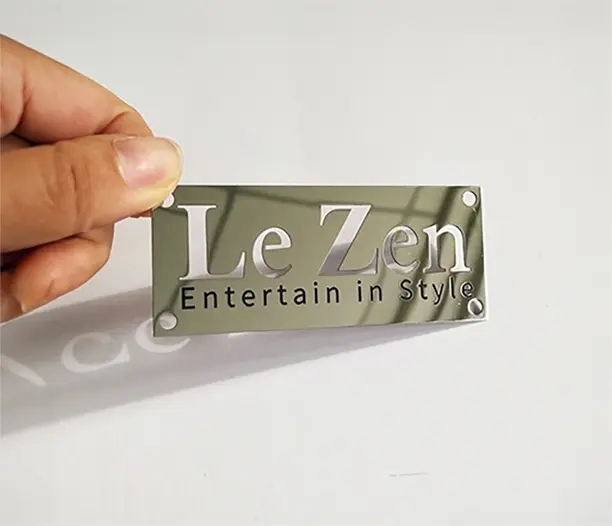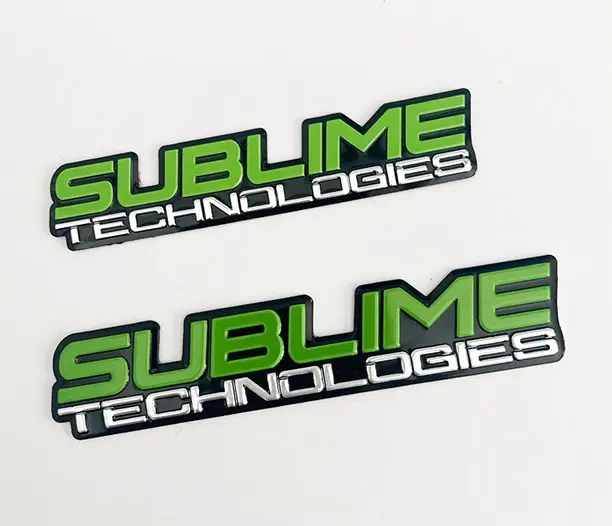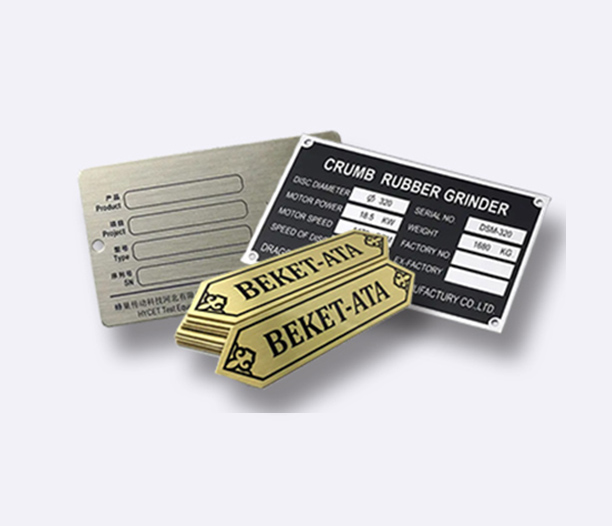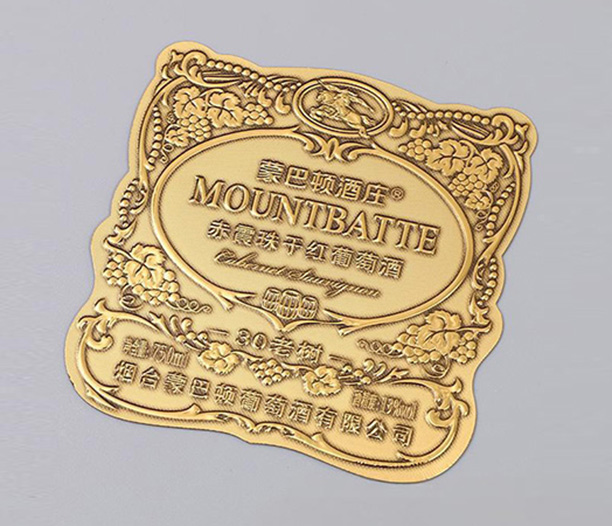Let's be honest: in the world of industrial equipment, asset tracking, or safety compliance, tags and labels can often be an afterthought. Bland, flimsy, or just plain hard to read. But what if your tags could actually work for you? Not just hold information, but grab attention, endure punishment, and scream professionalism? That's where Embossed Variable Data Tags step into the spotlight. They're not your grandpa's metal tags; they're durable, customizable data powerhouses that look sharp and last forever.
Creating truly eye-catching Embossed Variable Data Tags takes more than just running metal through a machine. It's about smart design, material savvy, and understanding what makes information pop – literally and figuratively. Ready to make your tags stand out from the crowd? Here are 7 killer tips:

1. Know Your "Why" and "Where": Durability & Environment Dictate Design
Before you even think about fonts or graphics, ask: Where is this tag living its life? Is it bolted to a piece of heavy machinery vibrating in a dusty factory? Riding shotgun on an oil rig facing salt spray and UV rays? Labeling electrical panels in a clean room?
- Material Matters Most: This is your foundation. Aluminum is lightweight, corrosion-resistant, and affordable – great for most indoor/light outdoor use. Stainless steel (especially Grade 316) is the heavy hitter for extreme environments: chemical exposure, saltwater, high heat, or intense abrasion. Brass offers a classic, high-end look but is softer.
- Thickness = Toughness: Thinner tags (like 0.015") work fine for gentle indoor applications. For anything facing impact, abrasion, or needing rigidity, jump to 0.025" or 0.032". Thicker tags (like 0.040" or 0.063") are practically indestructible.
- Pro Tip: Don't cheap out on material for harsh environments. A slightly pricier stainless steel tag that lasts 10 years is way cheaper than replacing flimsy aluminum tags every 6 months. Embossed Variable Data Tags earn their keep through longevity.
2. Master the Art of Legibility: Fonts, Size & Spacing Are King
The whole point of Embossed Variable Data Tags is to convey information clearly and permanently. Embossing creates tactile, raised characters that won't fade or scratch off. But poor design can ruin that advantage.
- Choose Fonts Wisely: Opt for clean, sans-serif fonts. Think Arial, Helvetica, or specially designed industrial fonts. Avoid overly complex, thin, or decorative fonts. Every character needs to emboss cleanly and be readable from the intended distance. Bold fonts generally emboss better and read easier than regular weight.
- Size It Right: Tiny text might fit more info, but if no one can read it without a magnifying glass, what's the point? Consider the viewing distance. Safety-critical information needs larger fonts. A good rule of thumb: minimum character height for general use is often 1/8 inch (3mm), but go larger for distance or low-light areas.
- Embrace White Space: Cramming too much information onto a small tag is a recipe for confusion. Give characters room to breathe! Adequate spacing between lines (leading) and characters (kerning) is crucial for quick scanning. Use clear separators or dividers for different data blocks (e.g., separating an asset ID from a serial number).
3. Leverage the Power of Contrast & Color
Embossing creates natural shadow and highlight, enhancing legibility. But you can supercharge this effect:
- Background Color Choices: The tag's base color is your canvas. Common choices are silver (natural aluminum/SS), gold (anodized aluminum or brass), or black. Black provides the absolute highest contrast for natural silver/white embossed characters. It's incredibly eye-catching and readable.
- Fill the Cavity (The Real Game-Changer): This is where Embossed Variable Data Tags get seriously sharp. After embossing the raised characters, the recessed cavities can be filled with a contrasting color (usually black, but sometimes red, blue, green, or white).Why Fill? Filling dramatically increases contrast, making the characters pop visually, especially from a distance or in low light. It also protects the recessed areas from dirt, grime, and corrosion buildup, maintaining legibility for years. Filled tags look incredibly professional and high-end.
- Pro Tip: For maximum impact and durability, especially outdoors or in dirty environments, always opt for filled characters. The visual payoff and long-term readability are worth it.
4. Incorporate Smart Graphics & Logos (But Keep 'Em Clean)
Embossed Variable Data Tags aren't just for text! Logos, safety symbols, warning pictograms, and simple borders can be embossed too.
- Embossed Graphics: Logos or icons can be raised (embossed) just like text. This adds a tactile, premium feel and reinforces branding. Ensure the logo design translates well to embossing – clean lines, not overly intricate tiny details.
- Debossed Areas: For a different effect, you can create recessed (debossed) areas, perhaps for a painted company name or a specific zone identifier that remains the base metal color.
- Key Consideration: Don't overcomplicate it. Graphics should enhance the tag's purpose and readability, not clutter it. Ensure symbols used (especially safety warnings) are standard and universally understood. Simplicity reigns supreme for effectiveness.
5. Plan Your Variable Data Fields Strategically
The "variable data" part is what makes these tags incredibly versatile – unique serial numbers, asset IDs, barcodes, QR codes, dates, locations, etc., can be stamped onto each tag individually.
- Identify Core vs. Variable: Clearly separate permanent information (company name, fixed warnings, logos) from the data that changes with each tag (serial numbers, specific asset IDs, inspection dates).
- Positioning for Scannability: If using barcodes or QR codes (highly recommended for asset tracking!), position them logically, ensuring there's enough clear space (quiet zone) around them for scanners to read reliably. Consider the most likely scanning angle.
- Consistency is Key: Define a clear template for where each piece of variable data lives on every tag. This makes it easier for users to find the info they need quickly. Use alignment guides in your design software.

6. Don't Neglect the Back Side & Mounting
A gorgeous tag is useless if it falls off or can't be attached securely.
- Mounting Holes: Specify size, quantity, and position accurately. Consider the mounting surface – flat, curved? Ensure holes are large enough for the intended fastener (rivet, screw, bolt) and positioned so the tag sits flat and secure. Countersinking holes can provide a flush finish.
- Adhesive Options: For smooth, clean surfaces where drilling isn't desirable or possible, industrial-grade adhesives (like VHB tape) can be incredibly strong. Specify if adhesive backing is required and the surface type it needs to bond to (clean metal, powder coat, plastic, etc.).
- Backside Simplicity: Usually, the back is plain. But if it's visible or needs specific protection, consider options like a protective laminate or even a simple debossed marking.
7. Partner with a Pro Who Gets It (Seriously, This Matters)
Not all tag manufacturers are created equal. Producing truly high-quality, durable, and visually effective Embossed Variable Data Tags requires specific expertise and the right equipment.
- Look for Experience: Find a vendor specializing in industrial metal tags and embossing, not just a generic printer. They understand the nuances of materials, embossing dies, filling techniques, and durability requirements.
- Ask About Their Process: How do they handle die creation? What quality control checks are in place? What's their turnaround time for variable data runs? Can they handle complex designs or special materials?
- Request Samples: Before committing to a large order, always get physical samples. Check the quality of the embossing, the sharpness of characters, the durability of the fill (scratch it gently!), the look and feel of the material. Does it meet your eye-catching standard?
- Pro Tip: A good vendor is a consultant. They should ask you the tough questions about environment, durability needs, and readability requirements before quoting, helping you design the best possible tag, not just the cheapest.
Wrapping It Up: Tags That Work as Hard as You Do
Creating eye-catching Embossed Variable Data Tags isn't rocket science, but it does require intentionality. It's about blending rugged durability with crystal-clear communication. By choosing the right material and thickness, mastering legibility through smart font choices and contrast (hello, filled cavities!), incorporating clean graphics, strategically planning your variable data, ensuring secure mounting, and partnering with a skilled manufacturer, you transform a simple tag into a powerful asset.
These tags go beyond basic identification. They enhance safety by making critical warnings unmissable. They boost efficiency by enabling instant asset scanning. They project professionalism and quality control. And crucially, they last, saving you money on replacements and preventing data loss.
So, ditch the flimsy labels and boring plates. Invest the time to design and source truly effective Embossed Variable Data Tags. When done right, they won't just catch the eye – they'll hold attention, convey vital information flawlessly for years, and become a silent, dependable workhorse in your operation. That's the real mark of a tag that means business.






